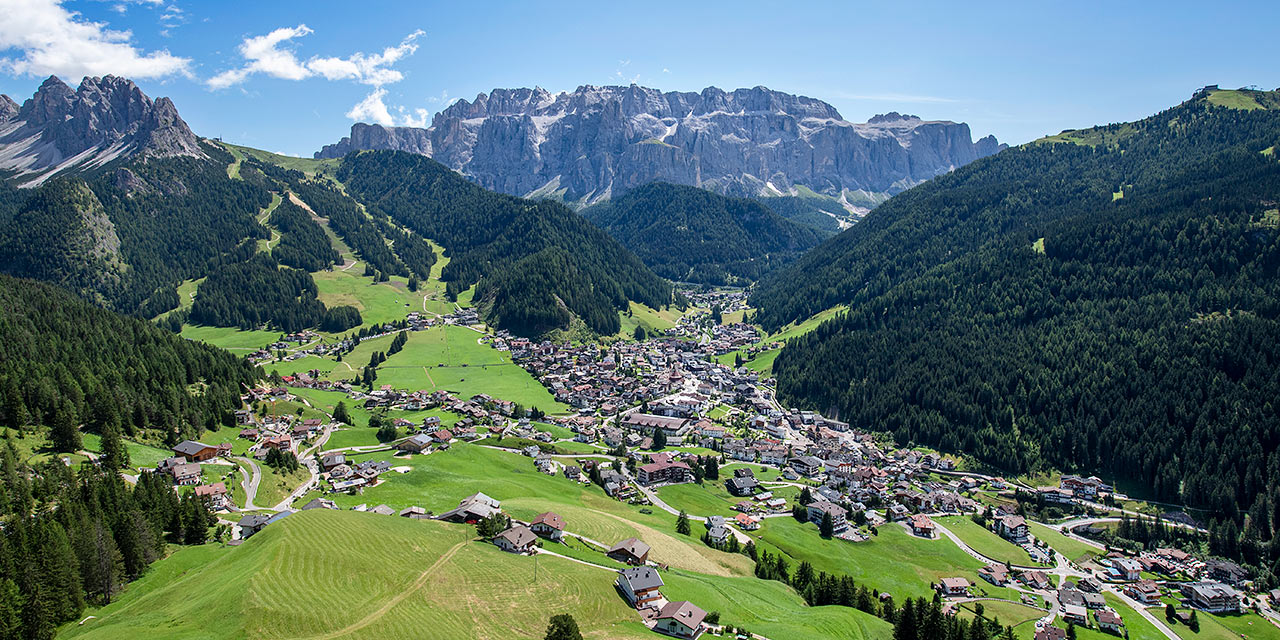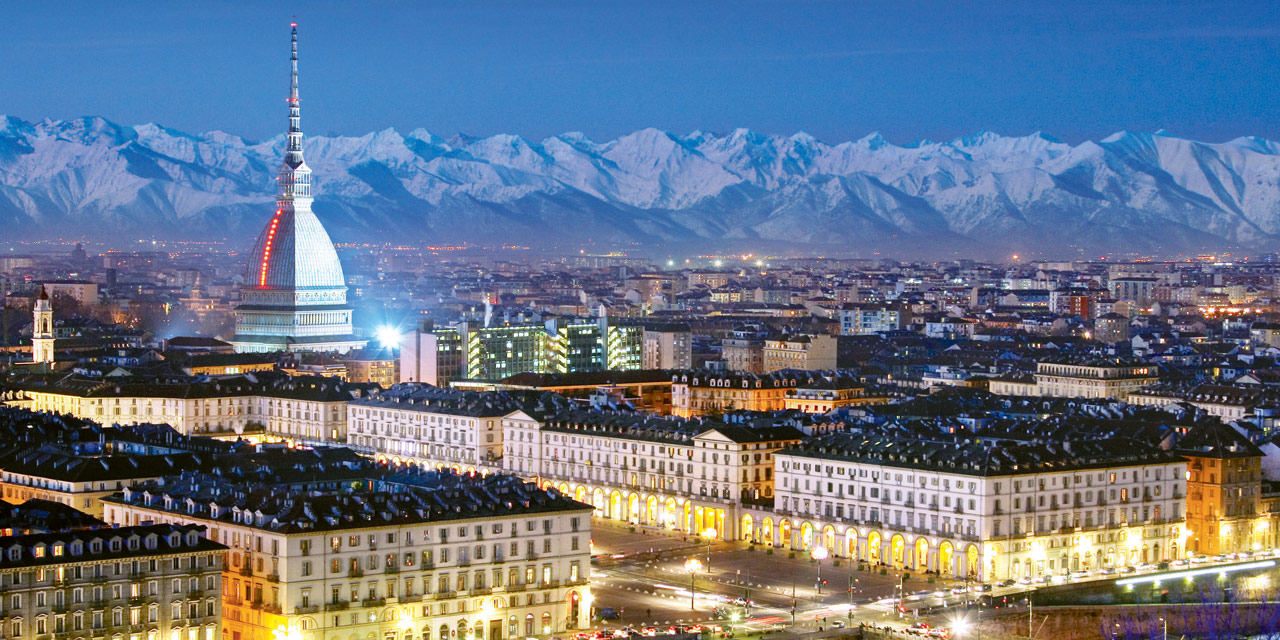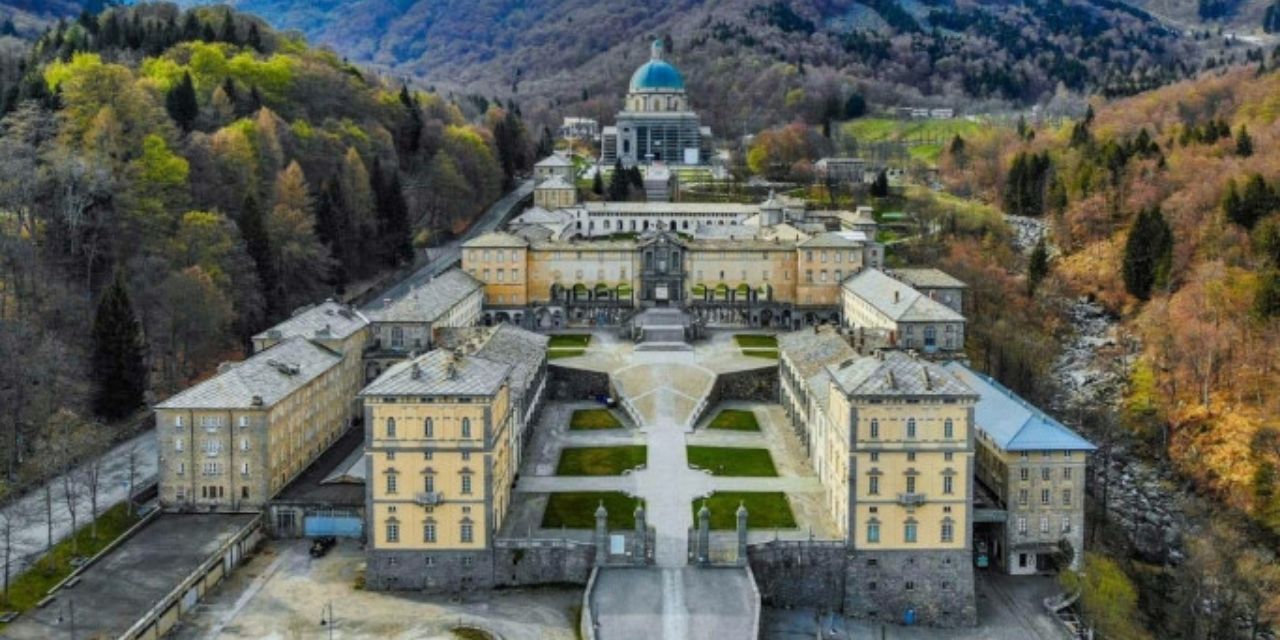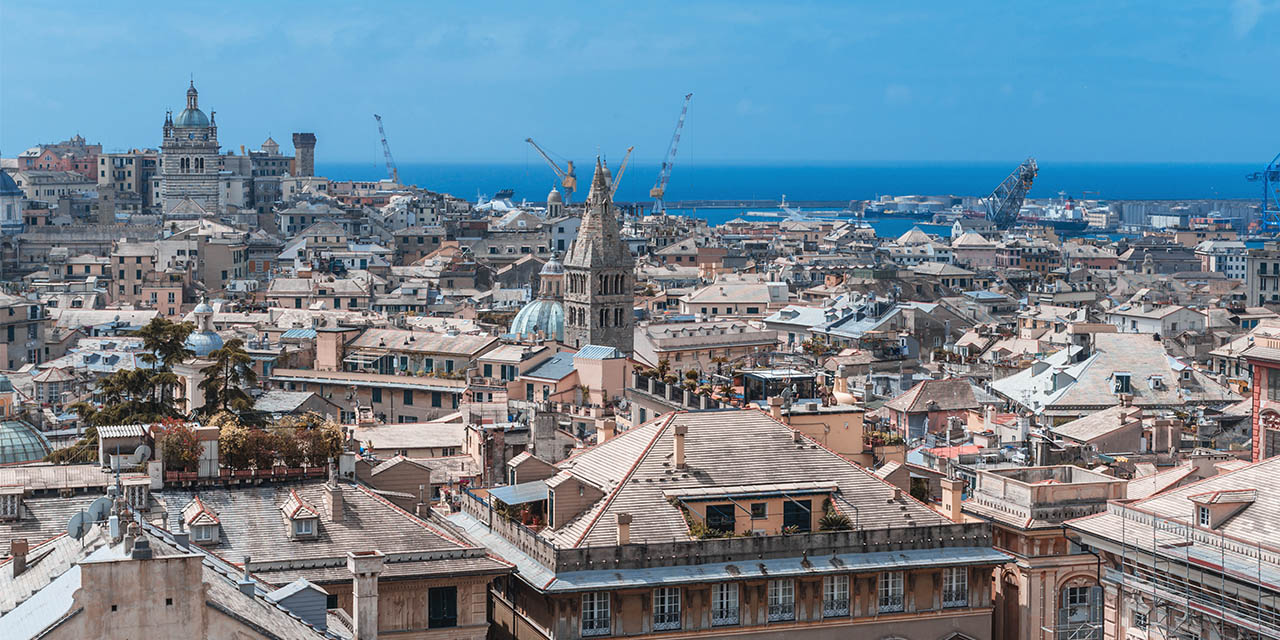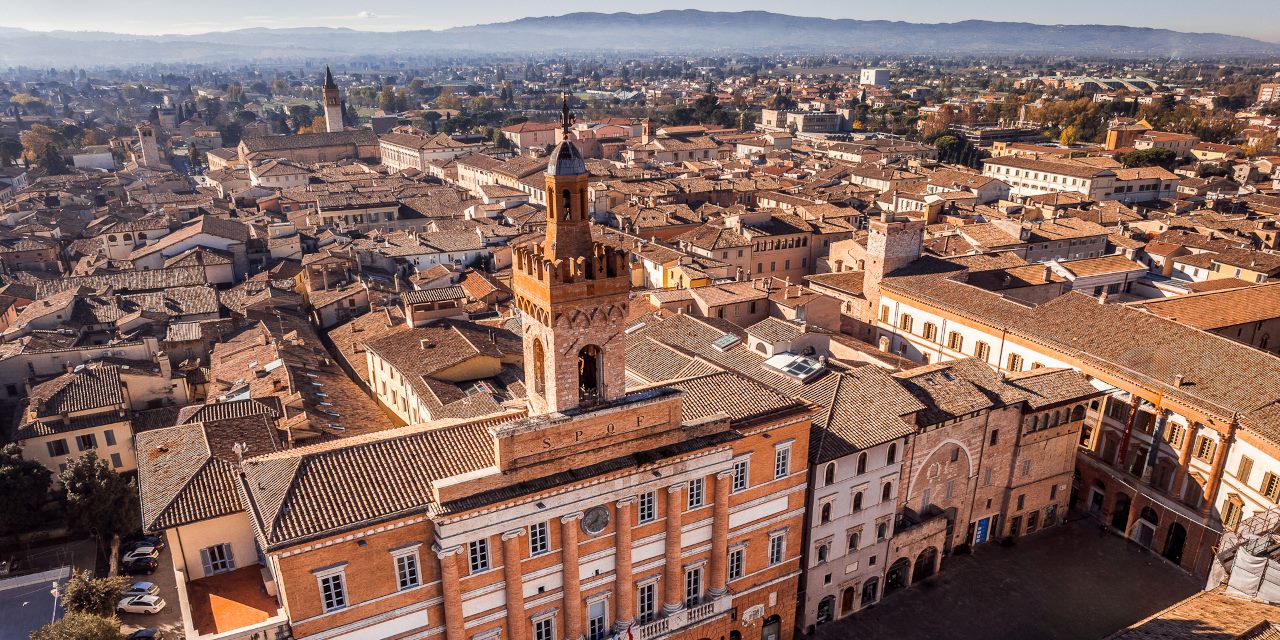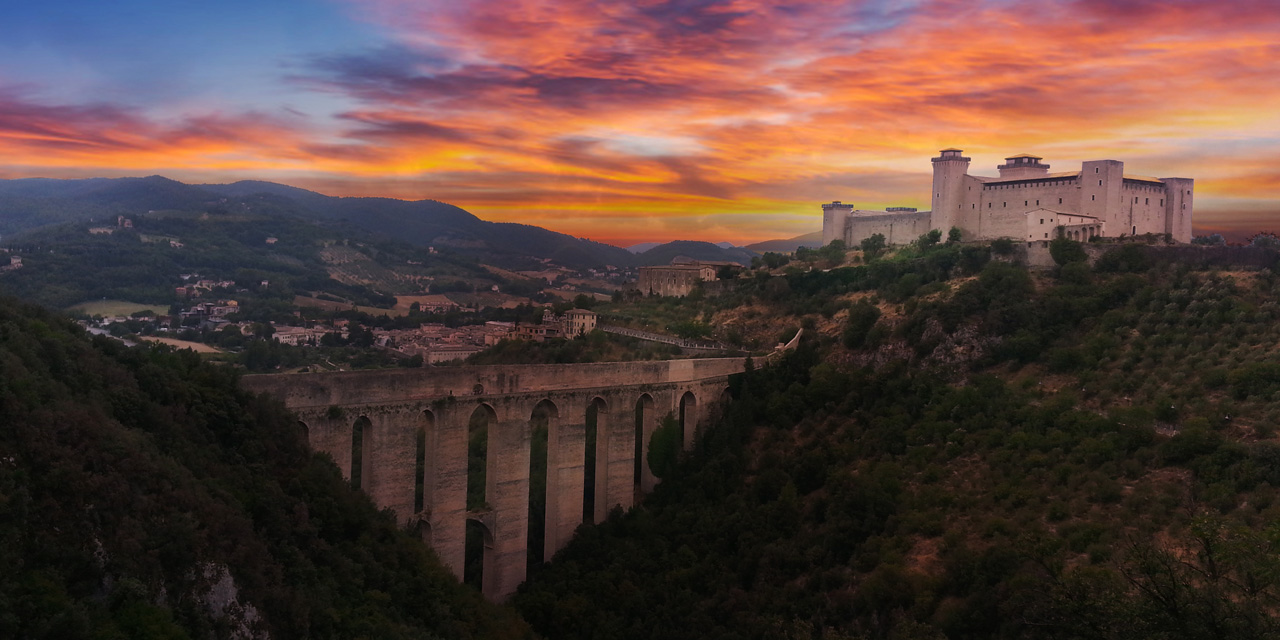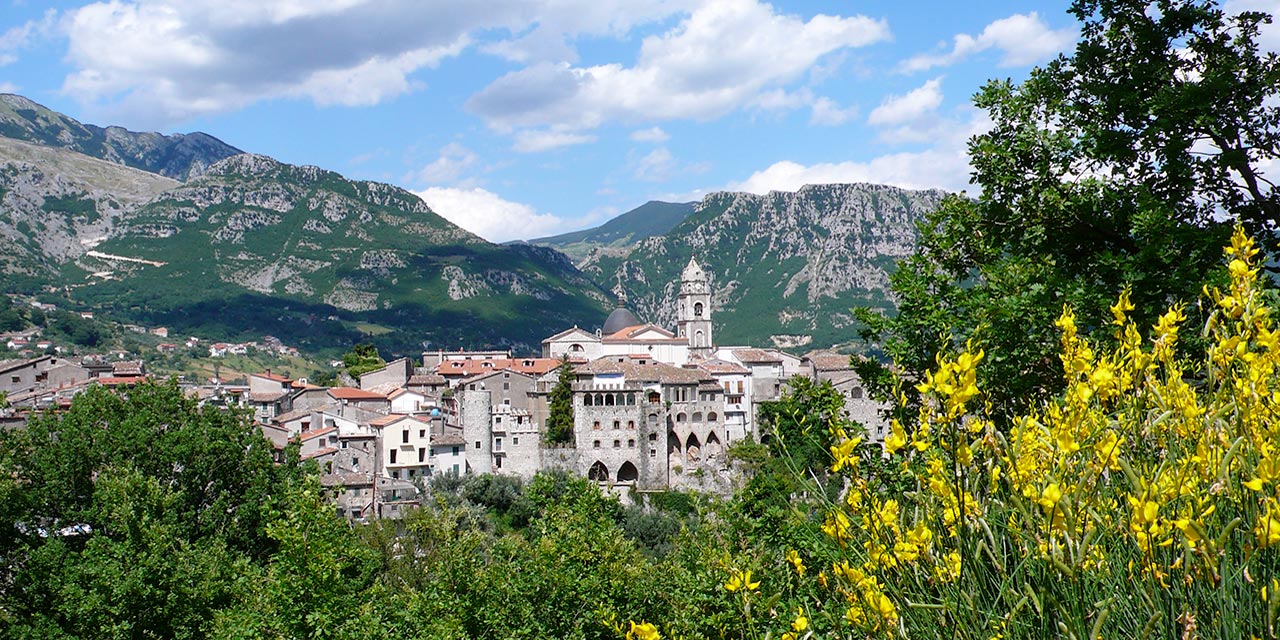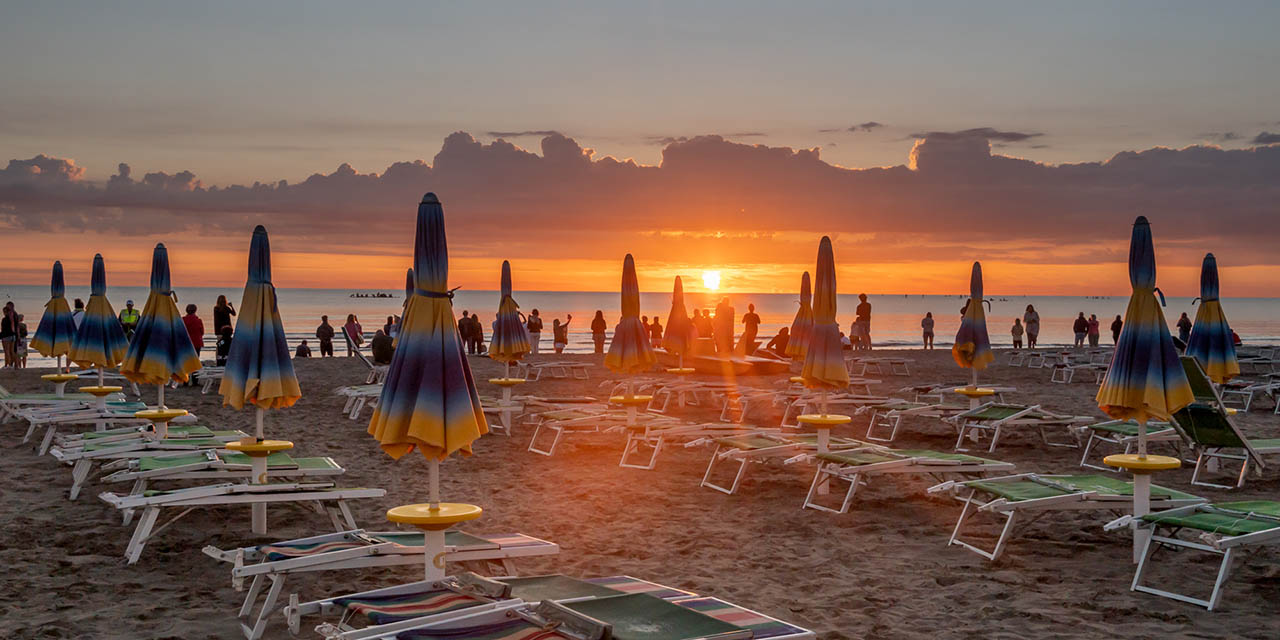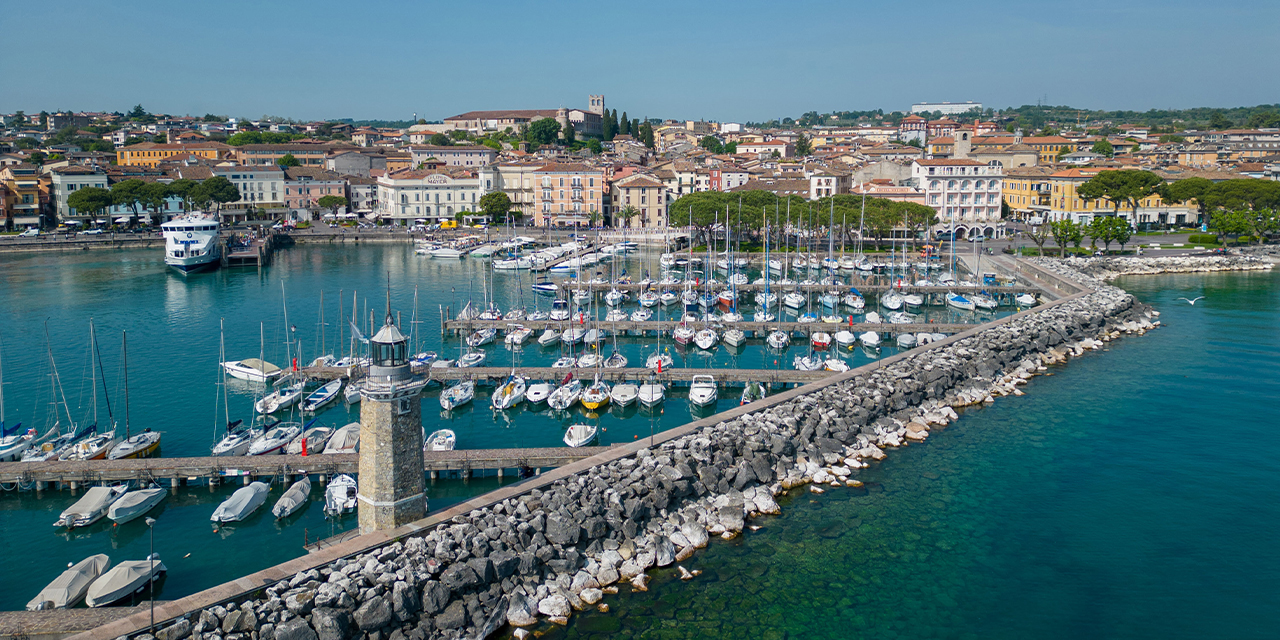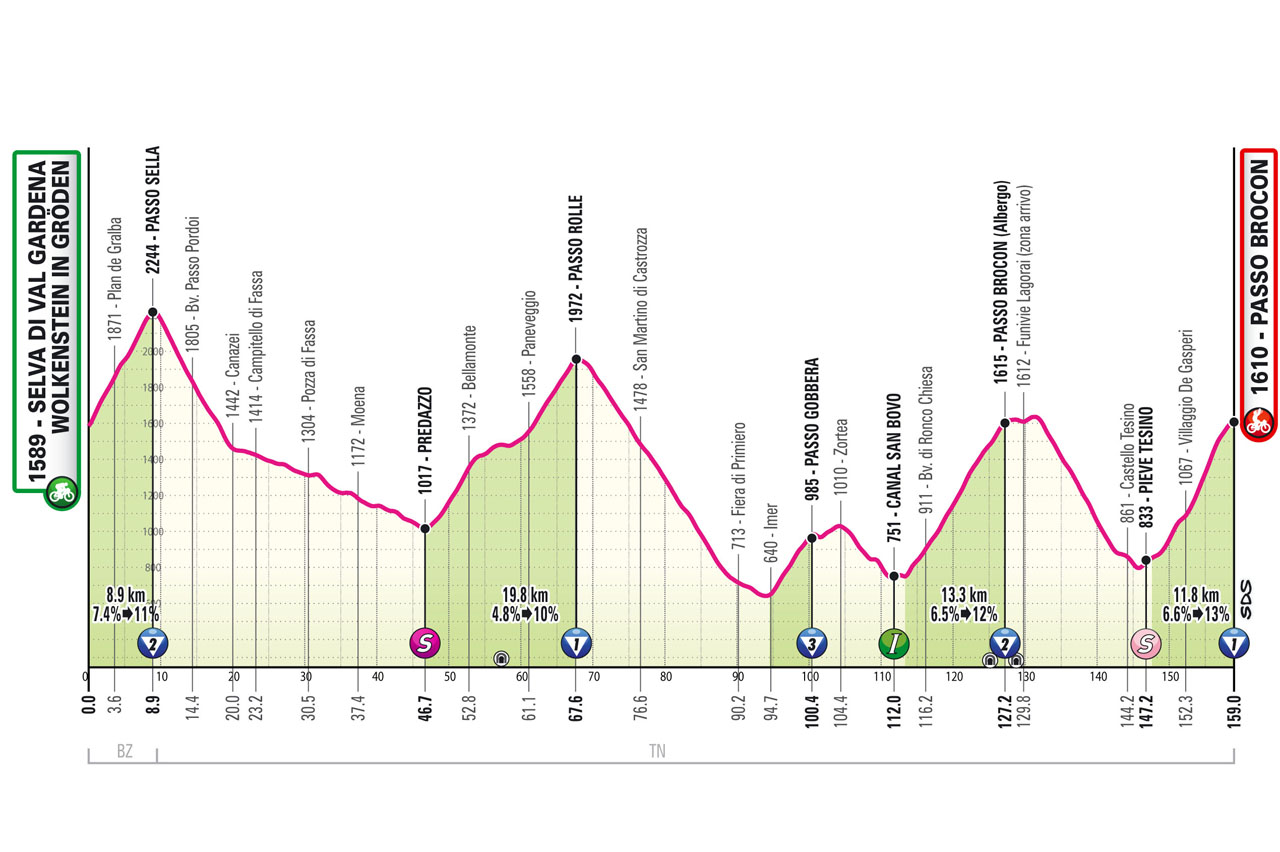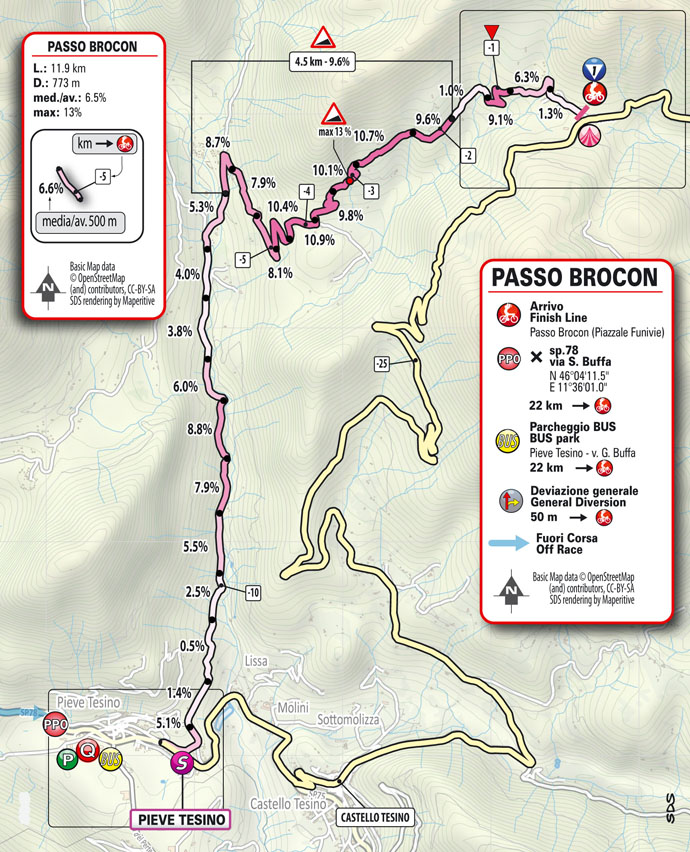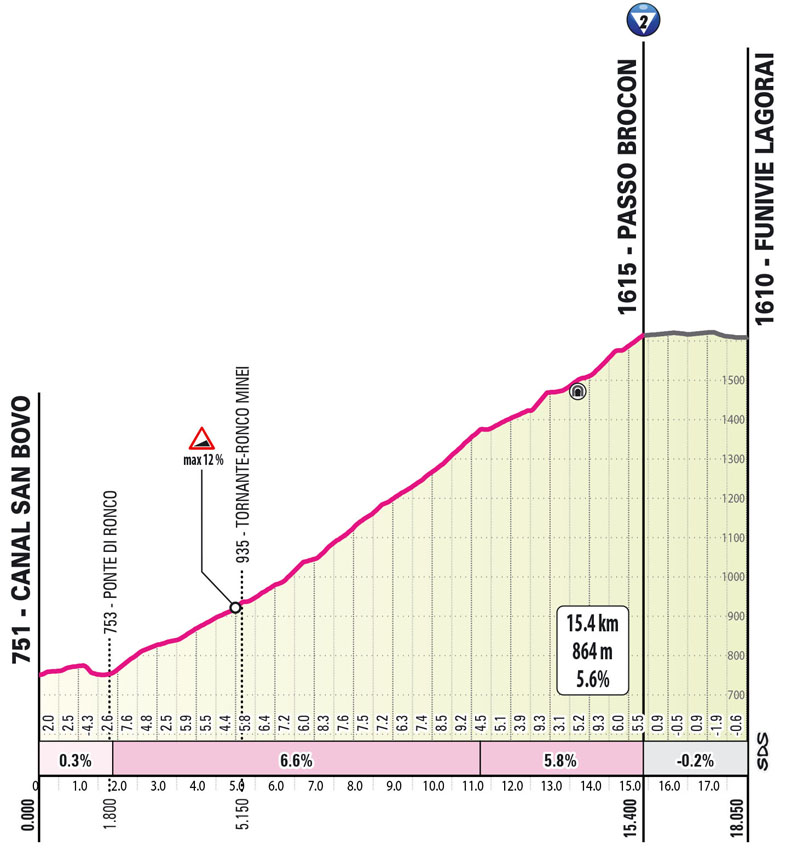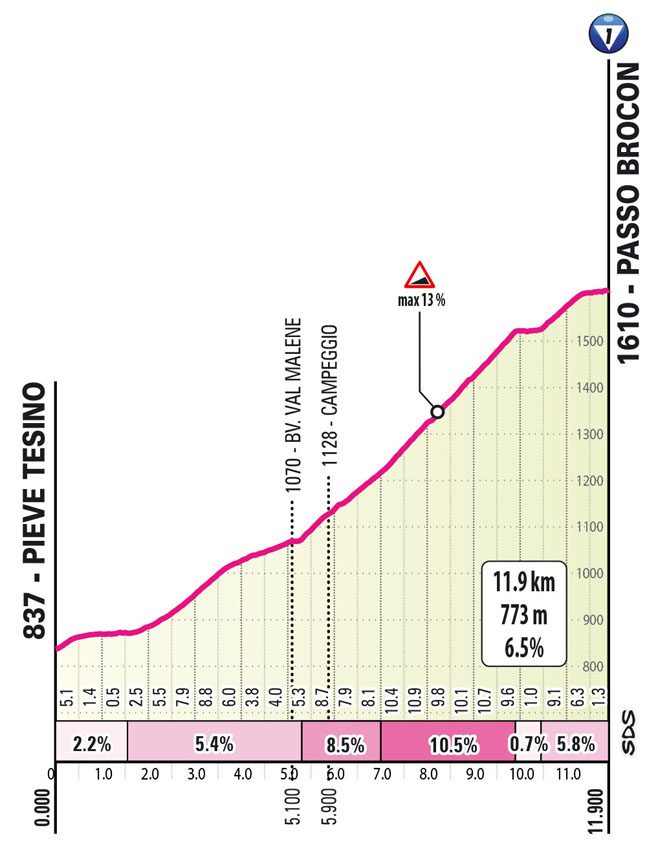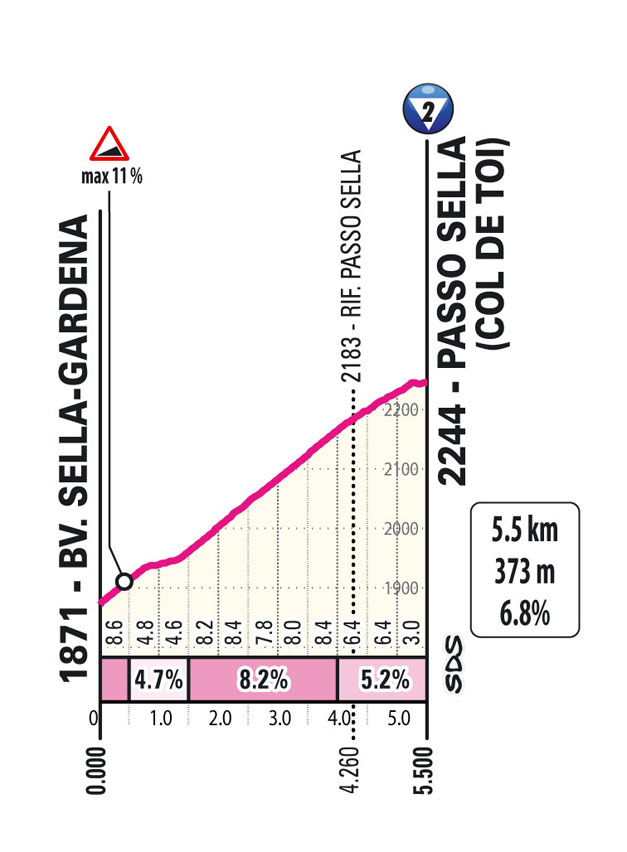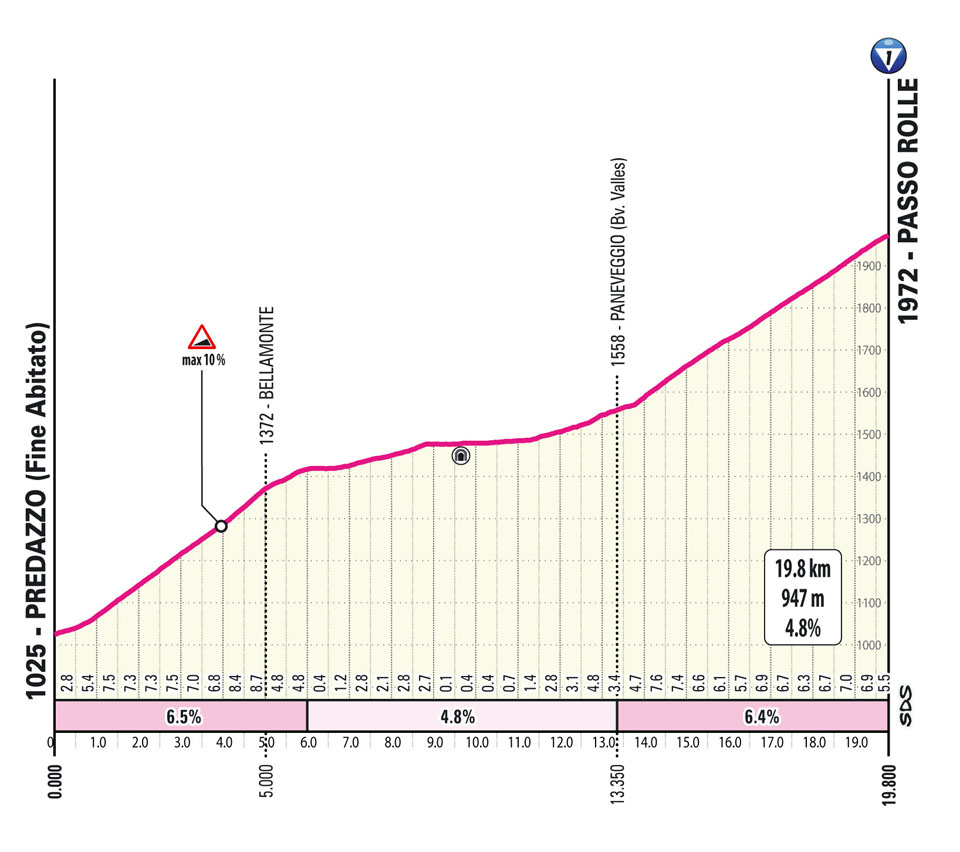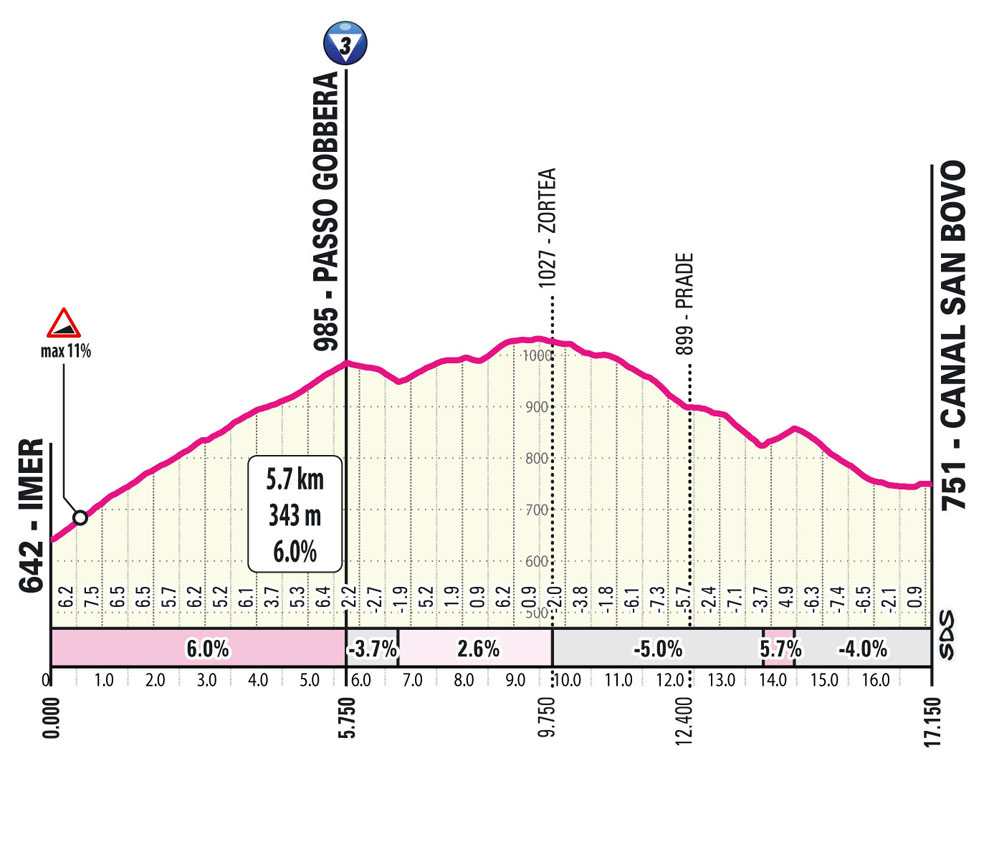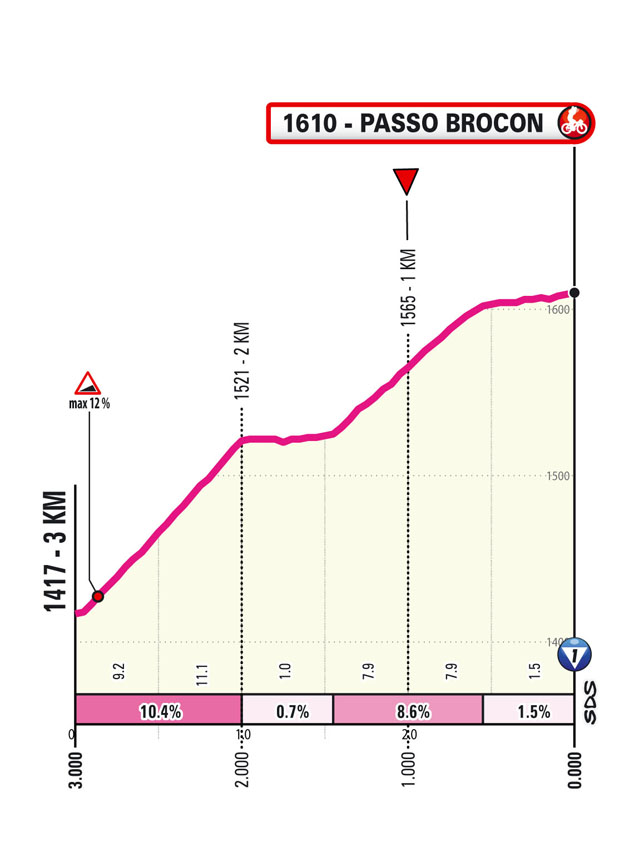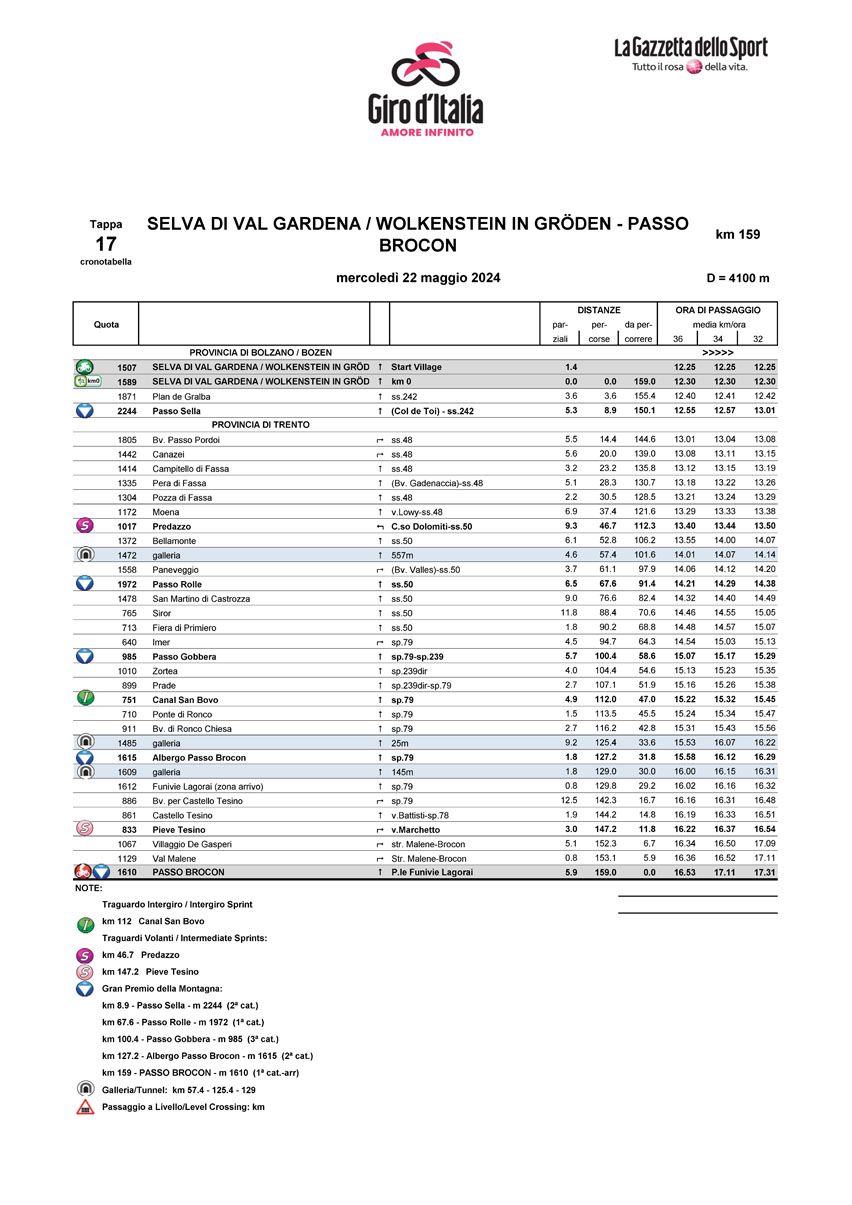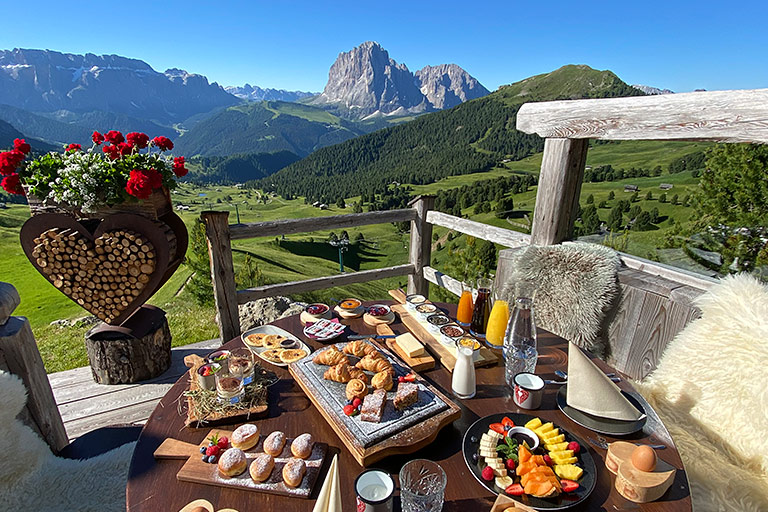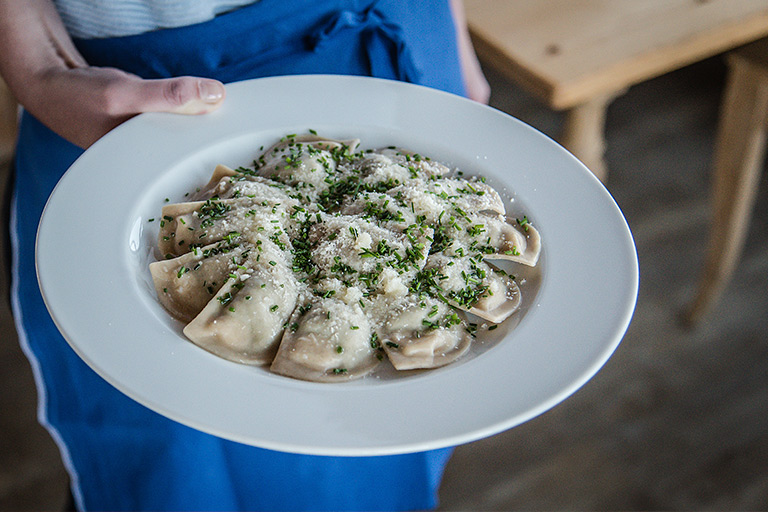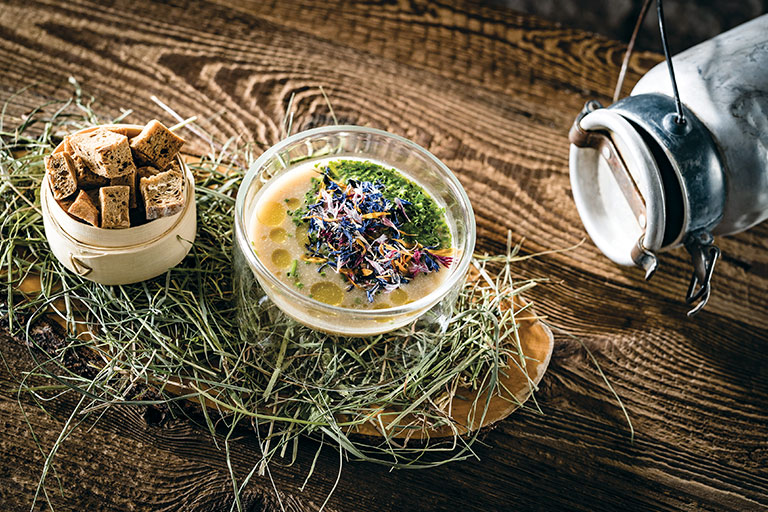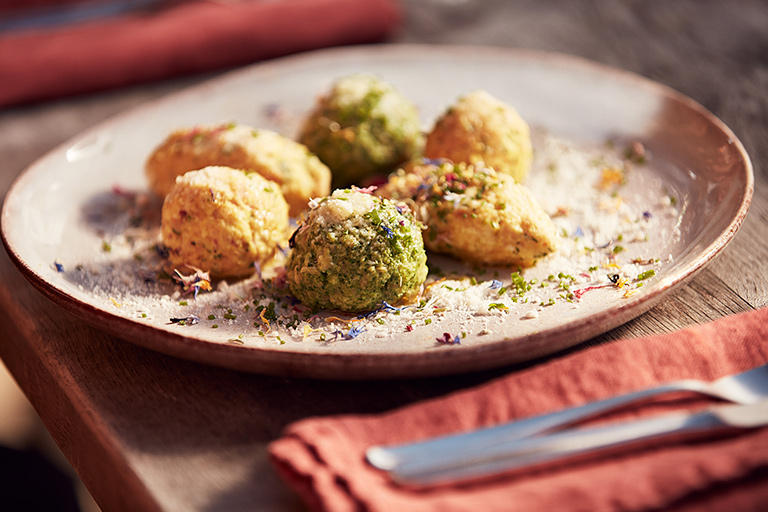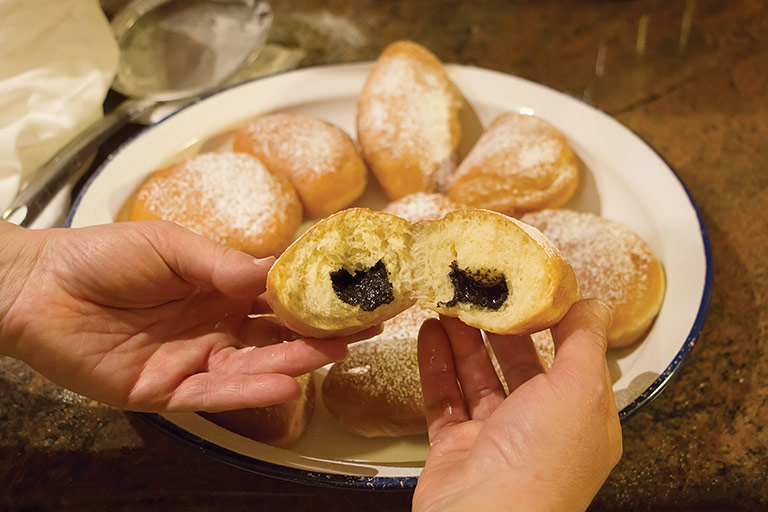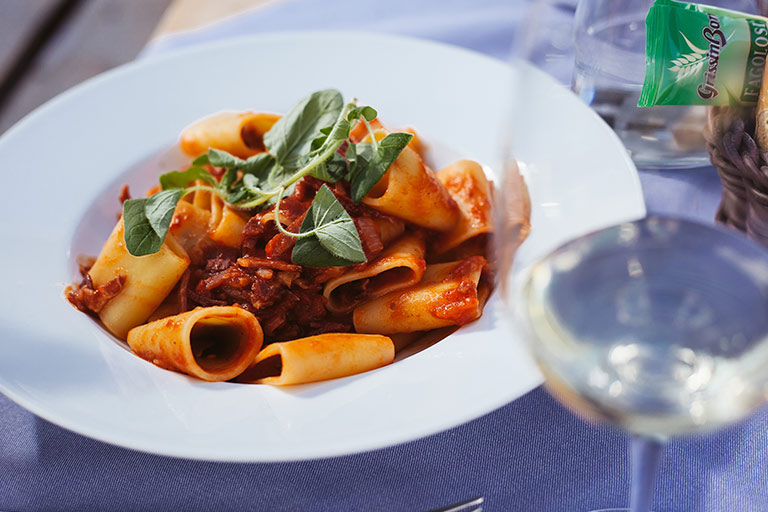profile
map
technical info
Intense climbing stage with brutal amount of elevation gain despite its short distance. The route climbs from the start on the Passo Sella, followed by a flat section in the Fassa and Fiemme Valleys all the way to Predazzo. The peloton will then tackle the 19km Passo Rolle, then the shorter, third category Passo Gobbera. The 13.3km Brocon Pass comes for the first time (eastern side) with around 50km of the stage remaining, and the riders will pass it for a second time (south-western side) to finish the stage.
Last kilometres
The last kilometres are uphill. The steep part of the last KOM, with gradients of up to 10%, ends at 2 km to go, where the road flattens out to slightly over 5%. The last 500 metres are slightly uphill. The final straight is 100 m long and 6 m wide.
start / finish
climb detail
final kilometres
itinerary timetable
tourist info
Host city:
Selva di Val Gardena / Wolkenstein in Gröden
Overview
Selva Val Gardena is famous for its scenic beauty, outdoor activities and rich Ladin culture with its many unique customs and traditions. Its privileged location offers breathtaking views of some of the most iconic peaks in the Dolomites, including the Sella massif and the Sassolungo group.
Local Cusine
The gastronomic culture of the region is another highlight, and visitors can enjoy authentic South Tyrolean dishes in cosy mountain huts and typical restaurants. The local cuisine offers a delicious combination of intense flavours, with authentic cheese dishes, quality meats and local products. Some of the most characteristic dishes include barley soup ‘Panicia’, potato sheets with sauerkraut ‘Grosti da patac y craut’, mosa ‘Jufa‘, D-shaped spinach cakes ‘Crafuncins da ula vërda‘, fruit bread ‘Fuiacia’ and many others.
Punti di Interesse
The village is renowned as an ideal starting point for exciting hikes and outdoor activities. During the winter, the impeccable ski slopes attract thousands of winter sports enthusiasts, offering a wide range of opportunities for alpine skiing, snowboarding and cross-country skiing. In summer, Selva Val Gardena turns into a true paradise for hikers and mountain bikers, with a network of trails through spectacular landscapes.
The old train route, passing in front of Castel Gardena, offers a unique experience, with the diagram of the snow fall since 1951 telling the story of the snowy landscape in the Poza area, and the Ski Champions route, where visitors can learn more about the history of alpine skiing in Val Gardena.
Climbing up towards the Daunëi area, we encounter the striking Via Crucis, which leads us into Vallunga, located directly in the Puez Odle nature park and passing beneath the fascinating Wolkenstein Castle Ruins. Also in the Daunëi area, on the Alpe Juac, we find the sundial created by local artist Roland Moroder.
Passo Brocon
Overview
The Brocon Pass is a bridge between the Tesino plateau and the Vanoi valley.
During the summer season, the Brocon Pass is a popular tourist destination, especially for its range of excursions and walks with splendid views. The winter season is all about skiing, with a vast choice of fun activities on the snow, from downhill skiing to snowboarding, from cross-country skiing to mountaineering as well as more family-oriented forms of entertainment. From a historical point of view, the pass was an important strategic point during the two world wars due to its location. Signs of the conflicts, such as underground bunkers and trenches dug by the Austrian militia, are still visible today.
Local Cusine
Typical and genuine products can be tasted in the restaurants of the Valsugana del Tesino, discovering the ancient flavours of the Lagorai and enjoying products and dishes that have contributed to writing the history of these valleys.
Le Verde: local cuisine is closely linked to the territory and characterised by simple dishes using the products of the land, as is the case for all Trentino cuisine. Among the vegetables, an important food resource was once potatoes, beans, turnips and cabbage; the latter, thanks to fermentation processes inside wooden tubs, were preserved both in the form of sauerkraut and “green”. But unlike the better-known sauerkraut, found throughout the Alps and in much of the Germanic world, “le verde” can only be found in the Tesino basin, it is still particularly appreciated and proposed according to ancient recipes, such as ‘Smacafame’, or combined with tasty meat cuts.
Malga cheese: the alpine dairymen and shepherds who spend the summer months in the mountains to graze their cows and produce cheese, ricotta and butter are the clearest symbol of the ancient rhythms and deep-rooted traditions of the Lagorai. Malga cheese is capable of bringing back to the palate all the fragrances of high-altitude pastures. Malga cheese differs from mass-produced cheese because it cannot be separated from the territory: the milk from grazing cows has unique organoleptic characteristics that make it absolutely unmistakable.
The small fruits of Tesino: strawberries, blackberries, raspberries and blueberries, as well as white and red currants. So many fruits are cultivated by the young entrepreneurs of local farms, offering the possibility of savouring the true taste of the mountain.
Points of Interest
Biolago Castello Tesino: set in the greenery of the sports area, the Biolago represents an additional opportunity for relaxation and contact with nature. The project began in 2014. After a brief interruption, works were resumed between 2017 and 2018 and have recently come to completion with the changing rooms, restrooms and the further improvement of the surrounding green area. The facility, a new added value to the valley, has a bathing surface of 700 square metres, reaches a maximum height of 1.40 metres and includes an indoor children’s pool with a maximum height of 70 cm.
Celado Astronomical Observatory – Castello Tesino: the Astronomical Observatory stands at an altitude of 1260 m on the south-western edge of Celado, a plateau located north of Asiago. Inside, the facility has a large lecture hall used for workshops and introductory guided tours. A well-stocked library of books on astronomy is also available.
The Tesino Griffon: the Tesino Griffon is the new Land Art work created by artist Marco Martalar. After more than 2 months of work, 35 quintals and 2000 pieces, the Griffon, 6 metres high and 9 metres long, dominates like a guardian over the magnificent town of Celado. Situated on the border between the two regions of Trentino and Veneto, the mythological figure of the griffon is meant to symbolise the union between the two regions, which is represented in the Veneto lion and the Trentino eagle.
Funivie Lagorai Marande Castello Tesino ski areas: in winter, Tesino turns into a splendid destination for ski lovers. With its 15 km of slopes, the Funivie Lagorai ski resort offers fans of this sport a variety of options. The Tesino basin, situated in the eastern side of Valsugana, is embraced by the Lagorai mountain chain, representing a perfect corner for those who wish to spend their holidays in the snow in an uncontaminated landscape. In addition to winter walking and snowshoeing routes, ski mountaineering is also popular in this valley.
The Cinte Tesino Adventure Park: the adventure park is a fun way to experience the mountains as well as to test your skills and courage. The park will let you rediscover the beauty of the Trentino forests thanks to its 5 routes of varying difficulty, up to 15 metres high, with hanging obstacles, ropes, lianas and the adrenalin rush of our flylines.
“Per Via” Museum – Pieve Tesino: The Per Via Museum was founded in 2014 in Pieve Tesino, on the eastern borders of the Autonomous Province of Trento, with the aim of remembering and recounting the epic deeds of the itinerant print sellers who, between the 18th and 19th centuries, rewrote the history of the Tesino valley and made it famous worldwide. The Museum collects and preserves the memory of the many men and women who were protagonists of this story, their courage, resourcefulness and even sacrifices.
Alcide De Gasperi’s birthplace – Pieve Tesino: opened to the public in 2006, the Museum is housed in the building where former Prime Minister and signer of the Italian Constitution Alcide De Gasperi was born, a symbolic place where the long and intense journey of this remarkable man began.

